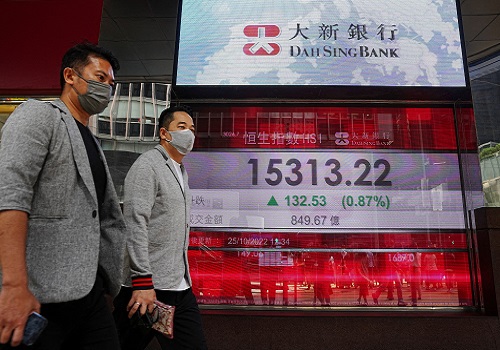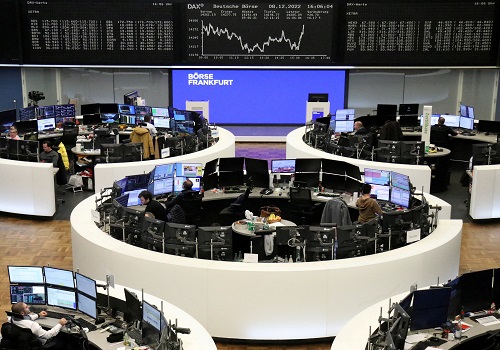Asian shares end quarter in sombre mood, dollar on high

Follow us Now on Telegram ! Get daily 10 - 12 important updates on Business, Finance and Investment. Join our Telegram Channel
SYDNEY - Asian shares were ending a rough quarter in a sombre mood on Thursday amid fears central banks' cure for inflation will end up sickening the global economy, though it is proving to be a fillip for the safe-haven dollar and government bonds.
Policy makers on Wednesday reiterated their commitment to controlling inflation no matter what pain it caused, and data on U.S. core prices later in the session will only underline the extent of the challenge.
"Inflation can be sticky," warned analysts at ANZ. "It is broadening from goods to services and wage growth is accelerating."
"Even with rapid rate rises, it will take time for tightness in labour markets to unwind, and that means inflation can stay higher for longer."
That suggests it is too early to pick a peak for interest rates or a bottom for stocks, even though markets have already fallen a long way.
The S&P 500 has lost almost 16% this quarter, its worst performance since the very start of the pandemic, while the Nasdaq is off an eye-watering 21%.
Early Thursday, S&P 500 futures and Nasdaq futures were both down 0.3% with little sign as yet that the new quarter will bring in brave bargain hunters.
MSCI's broadest index of Asia-Pacific shares outside Japan eased another 0.4%, bringing its losses for the quarter to 10%.
Japan's Nikkei fell 0.8%, though its drop this quarter has been a relatively modest 4% thanks to a weak yen and the Bank of Japan's dogged commitment to super-easy policies.
The need for stimulus was underscored by data showing Japanese industrial output dived 7.2% in May, when analysts had looked for a dip of only 0.3%.
Chinese blue chips added 0.6% helped by a survey showing a marked pick up in services activity.
Analysts at JPMorgan are looking a major rebound in China in coming months and felt that, with so much bad news priced into world markets, positioning argued for a bounce.
"It is not that we think that the world and economies are in great shape, but just that an average investor expects an economic disaster, and if that does not materialize risky asset classes could recover most of their losses from the first half," they wrote in a note.
DOLLAR IN DEMAND
For now, the risk of recession was enough to bring U.S. 10-year yields back to 3.085% from their recent peak at 3.498%, though that is still up 77 basis points for the quarter.
The yield curve has continued to flatten, and turned negative in the three- to seven-year range, while futures are almost fully priced for another Federal Reserve hike of 75 basis points in July.
The Fed's hawkishness has combined with an investor desire for liquidity in difficult times and gifted the U.S. dollar its best quarter since late 2016. The dollar index was trading up at 105.100 and just a whisker from its recent two-decade peak of 105.79.
The euro was struggling at $1.0442, having shed 5.6% for the quarter so far, though it remain just above the May trough of $1.0348.
The Japanese yen is in even worse shape, with the dollar having gained more than 12% this quarter to 136.70 and hitting its highest since 1998.
Rising interest rates and a high dollar have not been good for non-yielding gold which was stuck at $1,818 an ounce having lost 6% for the quarter. [GOL/]
Oil prices were flat on Thursday amid concerns about an unseasonable slowdown in U.S. gasoline demand, even as global supplies remain tight. [O/R]
OPEC and OPEC+ end two days of meetings on Thursday with little expectation they will be able to pump much more oil despite U.S. pressure to expand quotas.
September Brent rose 2 cents to $112.47 a barrel, while U.S. crude eased 5 cents to $109.73.












 320-x-100_uti_gold.jpg" alt="Advertisement">
320-x-100_uti_gold.jpg" alt="Advertisement">












